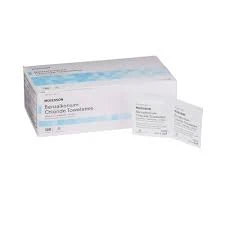hydrolyzed polyacrylamide
Hydrolyzed Polyacrylamide A Versatile Polymer in Various Industries
Hydrolyzed polyacrylamide (HPAM) is a synthetic polymer that has gained significant attention in various industrial applications due to its unique properties and versatility. This polymer is derived from polyacrylamide through partial hydrolysis, resulting in a product that has both hydrophilic and hydrophobic characteristics. Its ability to interact with water and its long-chain structure make it a valuable material in several fields, including agriculture, water treatment, and oil recovery.
Structure and Properties
HPAM is characterized by its linear structure, which consists of a backbone of acrylamide units. The degree of hydrolysis determines the properties of the polymer, influencing its molecular weight and solubility. The presence of carboxyl groups resulting from hydrolysis enhances its water solubility and allows for better interaction with other substances. As a result, HPAM exhibits excellent thickening, water-retaining, and flocculating properties. These features make it particularly useful in applications requiring the manipulation of fluid characteristics.
Applications in Agriculture
In agriculture, HPAM is predominantly used as a soil conditioning agent. By improving soil structure, it helps retain moisture and nutrients, ultimately enhancing plant growth and crop yields. Farmers apply HPAM to sandy soils to reduce erosion and improve water retention. This is especially beneficial in arid regions where water availability is limited. Furthermore, HPAM can slow down the leaching of fertilizers, ensuring that crops receive the necessary nutrients over an extended period.
Water Treatment
hydrolyzed polyacrylamide

HPAM plays a crucial role in water treatment processes. It is employed as a flocculating agent to aid in the removal of suspended solids from wastewater. When added to water, HPAM can aggregate fine particles into larger clumps, or flocs, that can be easily separated from the liquid through sedimentation or filtration. This process is vital for producing clean water from municipal and industrial waste, thus contributing to the sustainability of water resources.
Enhanced Oil Recovery
One of the most significant applications of hydrolyzed polyacrylamide is in the oil and gas industry, particularly in enhanced oil recovery (EOR) techniques. In this context, HPAM is used to improve the efficiency of oil extraction. By injecting water mixed with HPAM into oil reservoirs, the polymer increases the viscosity of the injected water, which helps in displacing the oil towards production wells. This process enhances oil recovery rates and maximizes the output from existing reserves, making it a cost-effective solution for oil companies.
Environmental Considerations
The extensive use of HPAM raises concerns regarding its environmental impact. While HPAM itself is generally considered non-toxic and biodegradable, the production and disposal processes must be managed carefully to minimize environmental harm. Research is ongoing to develop more sustainable manufacturing practices and to explore the potential for using naturally derived alternatives to reduce reliance on synthetic polymers.
Conclusion
Hydrolyzed polyacrylamide is an exceptional polymer with a wide range of applications across various industries. Its unique properties allow it to serve as an effective soil conditioner, a vital component in water treatment, and a key element in enhanced oil recovery processes. As industries seek more efficient and sustainable methods, the demand for HPAM and its derivatives is likely to continue growing. Ongoing research and development will further enhance its applications while addressing environmental concerns, solidifying HPAM’s role as a critical material in modern industrial practices.
-
Water Treatment with Flocculant Water TreatmentNewsJun.12,2025
-
Polymaleic AnhydrideNewsJun.12,2025
-
Polyaspartic AcidNewsJun.12,2025
-
Enhance Industrial Processes with IsothiazolinonesNewsJun.12,2025
-
Enhance Industrial Processes with PBTCA SolutionsNewsJun.12,2025
-
Dodecyldimethylbenzylammonium Chloride SolutionsNewsJun.12,2025





